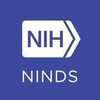
CARDS Is Designed To Show If Lowering Cholesterol With Atorvastatin In Type 2 Diabetics Without...
Major Coronary EventCerebrovascular Accident4 moreA study to assess the efficacy of once daily atorvastatin 10 mg versus placebo on cardiovascular endpoints in patients with non-insulin-dependent diabetes mellitus (NIDDM) who have a history of either hypertension, retinopathy, microalbuminuria, macroalbuminuria, or who currently smoke, but who do not have established corornary heart disease or other macrovascular disease.

A Study to Determine the Degree of Additional Reduction in CV Risk in Lowering LDL Below Minimum...
Cardiovascular DiseaseCerebrovascular Accident1 moreThe primary objective of this study is to determine the degree of additional reduction in cardiovascular risk that was accrued to patients by lowering their LDL-C beyond the currently accepted minimum target level for patients with pre-existing CHD. Secondary objectives include the safety profile of this treatment strategy, its cost-effectiveness, effect on other atherosclerotic-related events and procedures, and total mortality.

WENBIT - Western Norway B Vitamin Intervention Trial
Coronary Artery DiseaseMyocardial Infarction1 morePURPOSE OF STUDY Observational studies have demonstrated that elevated levels of plasma total homocysteine is a risk factor for cardiovascular disease. The purpose of this trial is to evaluate the clinical effects of homocysteine lowering treatment with B vitamins during 3-5 years follow-up of patients undergoing cardiac catheterization for suspected coronary artery disease (CAD). Special attention will be given to complication rates among patients needing subsequent percutaneous transluminal coronary angioplasty (PCI) or coronary artery by-pass grafting (CABG). HYPOTHESIS The primary hypothesis of this study is that, among patients with CAD, a daily supplement with B vitamins will reduce the risk for cardiovascular mortality and serious cardiovascular events with at least 20%. The secondary hypothesis of this study is that, among patients with CAD, a daily supplement with B vitamins will reduce the risk for total mortality, coronary events, cerebrovascular events and other cardiovascular events. The hypothesis will be tested for an effect of any of the treatments (folic acid / vitamin B12 or B6), and the effect will be evaluated according to initial total homocysteine levels and B vitamin levels as well as to the change in these levels after 1 and 6 months. The sample size has been calculated to 3088 patients using a two-sided chi-square test with significance 0.05 and at an 80% power level, presumed event rate of 22% over 4 years, and event rate reduction of 20%, adjusted for non-compliance/drop-out of 20%. STUDY DESIGN This is a controlled, double-blind two-centre trial with 3090 included men and women who underwent coronary angiography at Haukeland University Hospital or Stavanger University Hospital between April 1999 and April 2004. At baseline about 1300 patients underwent PCI and 600 underwent CABG. The patients were randomized into 4 groups in a 2 x 2 factorial design to receive one of the following four treatments: A, folic acid 0.8 mg plus vitamin B12 0.4 mg and vitamin B6 40 mg per day; B, folic acid 0.8 mg plus vitamin B12 0.4 mg per day; C, vitamin B6 40 mg per day; D, placebo. The active drug and the placebo tablets had identical appearance and taste. Treatment was started as soon as the patients were randomized after the coronary angiography procedure. The patients have been undergoing interviews, clinical examination and blood-sampling at baseline, at follow-up after 1 month and 1 year, and at a final study visit. In addition, information on dietary habits was obtained from 2400 patients at baseline. Among 350 patients that have undergone PCI at baseline, a full clinical examination, blood sampling and repeat coronary angiography to assess re-stenosis has been performed about 9 (6-12) months after the PCI procedure. For these patients, angiograms suitable for quantitative coronary angiography (QCA) analysis have been obtained at the baseline and follow-up invasive procedures. The follow-up was terminated ahead of schedule in October 2005 due to lack of compliance of the participants caused by media reports from the NORVIT study (NCT00266487) on potential increased cancer risk associated by B vitamin supplementation. The patients had then been followed for 1.5 - 5 years. STUDY END POINTS Primary clinical endpoints during follow-up are all cause death, non-fatal acute myocardial infarction, acute hospitalization for unstable angina and non-fatal thromboembolic stroke (infarction). Secondary endpoints are fatal and non-fatal acute myocardial infarction (including procedure related myocardial infarction), acute hospitalization for angina, stable angina with angiographic verified progression, myocardial revascularization, fatal and non-fatal thromboembolic stroke.

Rural Andhra Pradesh Cardiovascular Prevention Study (RAPCAPS)
Myocardial InfarctionAngina Pectoris2 moreThis study will evaluate the effectiveness of a novel cardiovascular disease prevention program designed for delivery through existing primary health care services in rural villages in Andhra Pradesh. The primary aim is to increase the number of high-risk individuals in the population that are appropriately managed with proven, low-cost preventive interventions. The corresponding null hypothesis is therefore that the prevention program will result in no change in the proportion of high-risk individuals identified and treated in villages assigned to intervention compared with those villages assigned to control.

VITATOPS: A Study of VITAmins TO Prevent Stroke
StrokeTransient Ischemic AttackThe VITATOPS study is a multi-center, randomized, double blind, placebo-controlled secondary stroke prevention trial to determine whether the addition of vitamin supplements (B12 500 ug, B6 25 mg, Folate 2 mg) to best medical/surgical management (including modification of risk factors) will reduce the combined incidence of recurrent vascular events (stroke, myocardial infarction) and vascular death in patients with recent stroke or transient ischemic attack (TIA). All patients presenting to one of the participating neurologists or general physicians within seven months of stroke (ischemic or hemorrhagic) or TIA (eye or brain) are eligible for this trial. Eligible patients will be randomized in a double-blind fashion to receive multi-vitamins or placebo, 1 tablet daily. The primary outcome event is the composite event "stroke, myocardial infarction, or death from any vascular cause", whichever occurs first. Our target is to recruit a total of 8,000 patients over the next two years with a median follow-up of 2.5 years. Recruitment to the trial began in November 1998 and is planned to continue until December 2005. We aim to complete final follow-up by the end of 2006. However, the Steering Committee will be flexible in dictating the need for ongoing recruitment and continuing follow-up, depending on the overall rate of the primary outcome event in the entire cohort at each interim analysis.

Families In Recovery From Stroke Trial (F.I.R.S.T.)
StrokeThe purpose of this trial is to assess the effects of a psychosocial intervention on functional recovery after stroke.

PREVAIL: PREvention of VTE After Acute Ischemic Stroke With LMWH Enoxaparin ( - VTE: Venous Thromboembolism...
Acute Ischemic StrokePrimary objective: To demonstrate superiority of enoxaparin 40 mg sc qd in the prevention of VTE compared to UFH (unfractionated heparin) 5000 U sc q12 hours given for 10 ± 4 days following acute ischemic stroke. Secondary objectives: To compare the incidence of VTE between the 2 treatment groups at 30, 60, and 90 days from the time of randomization To compare neurologic outcomes between the 2 treatment groups, including incidence of stroke recurrence, rate of stroke progression, and patient functional status, during the 10 ± 4 days of treatment, and after 30, 60, and 90 days from the time of randomization To evaluate the safety of using enoxaparin compared to UFH for VTE prevention in patients following acute ischemic stroke

Risk Factors for Stroke or Systemic Embolism in Chinese Patients With Non-Valvular Atrial Fibrillation...
Atrial FibrillationStrokeThis study is aimed to validate the existing stroke risk stratification model for patients with atrial fibrillation (AF) (CHA2DS2-VASc Score, CHADS2 Score, ATRIA score, ABC score, etc.) and establish a new stroke risk assessment model using a nationwide AF -specific registry in China.

Turkish Version of Telephone Based ABILOCO-Stroke
Cultural AdaptationStroke2 moreThe aims of this study were to perform cultural adaptation of the telephone based ABILOCO-stroke instrument and provide information regarding the factor structure, reliability and validity of the instrument in Turkish speaking patients with stroke.

Observational Longitudinal Study on the Outbreak and Management of Stroke Related Spasticity
Spasticity as Sequela of StrokeStroke is one of the leading cause of death and disability worldwide. Post-stroke spasticity (PSS) is outbreak after a stroke and is featured by disabling muscle stiffness. PSS could manifest in up tp 50% cases within 6 months after a stroke, especially in the upper limb. Despite it is an acknowledged condition it is insufficiently recognized and treated in clinical practice. Focal and regional spasticity could improve with rehabilitation and in selected cases with botulinum neurotoxin (BoNT) type A injections. The latter causes muscle relaxation and fosters neuroplasticity, which is able in turn of ameliorating several patient functional aspects. Recent literature demonstrated that PSS patients treated with early BoNT (within 3 month since PSS outbreak) could improve in their clinical status better than patients with a later treatment. An earlier recognition of PSS predictors could improve patient management. Hence, the investigators are going to perform a multicentric prospective observational real life study with BoNT, based on the best clinical practice and aimed at the early recognition and management of PSS through the identification of 1) early clinical predictors of spasticity (collected within 10 days since stroke), 2) BoNT clinical outcome relative to the timing of the treatment
